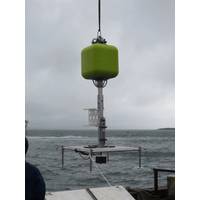
Lander Lab #4: Underwater Releases
the spring pulls the pliers open to release the weight. (Illustration, Phleger et al., 1970)AcknowledgementsThe author thanks Greg MacEachern and Rob Morris, EdgeTech, Gary Burnhardt, formerly with Benthos, John Kemp, WHOI, Frank Snodgrass and Bob Truesdale, formerly from Scripps, Le Olsen, formerly of UW-APL, and Bart Chadwick, SubSeaSystems for their advice with applications, willingness to try new things, and always sharing from their wealth of experience and knowledge.Reader FeedbackYour comments and shared experiences are always welcome. Please send your thoughts, stories and photos to: Kevin
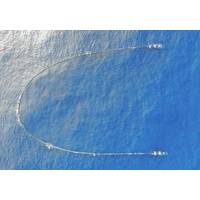
The Ocean Cleanup: APL Signs On
Ocean carrier APL announced Tuesday that it will provide free shipping to The Ocean Cleanup, a non-government, non-profit organization working to develop technologies to rid the world’s oceans of plastic.“We applaud The Ocean Cleanup’s course in cleaning up our oceans. In partnering with The Ocean Cleanup, APL seeks to step up our efforts in protecting marine biodiversity. APL is fully behind The Ocean Cleanup’s efforts to remove ocean debris that contributes to habitat destruction and kills tens of thousands of marine animals each year,” said Dennis Yee, APL Global Head
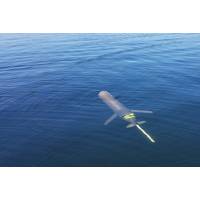
Exocetus Delivers Glider to Johns Hopkins APL
Connecticut-based Exocetus Autonomous Systems said it has delivered its first MOD2 Glider to Johns Hopkins University Applied Physics Laboratory (APL). The vehicle was purchased as part of an internal research and development project which intends to explore a diverse set of applications for the vehicle.“Johns Hopkins APL was looking for a vehicle that could provide endurance and easy modification, and the MOD2 Glider was the only vehicle out there that provided those capabilities,” said Joe Turner, Exocetus COO & General Manager. The delivery took place at the end of July
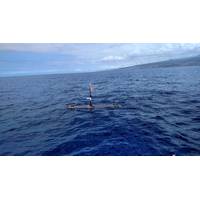
Wave Gliders to Study Arctic and Southern Oceans
to conduct advanced scientific research in inhospitable and remote regions of the Arctic and Southern Oceans.Using Liquid Robotics’ wave and solar powered Wave Gliders, scientists from Scripps Institution of Oceanography (Scripps) and the Applied Physics Laboratory of the University of Washington (APL-UW) will obtain real time data and rare insights into the dynamic conditions that drive the world’s weather and climate. This data is critical for scientists to understand and improve global ocean weather modeling and climate prediction.The oceanographers leading these missions are:Dr. Eric
UW’s New Research Vessel Ready for Work
;s arrival at UW on December 28, 2017, UW has been preparing and transforming the former fisheries research vessel into a capable Local Class oceanographic research vessel. R/V Rachel Carson's first research cruise starts on April 7 supporting Washington Ocean Acidification Center research headed up by UW APL's Dr. Jan Newton. R/V Rachel Carson is a step up in capability from its predecessor, R/V Clifford Barnes. With the new ship's endurance, excellent ship handling and seakeeping capabilities, significantly increased lab space, and increased load handling capability - it is now possible
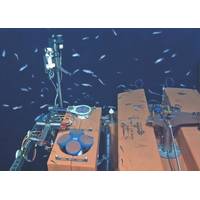
ADCPs: Action in OOI's Cabled Observatory
data via a cable connection to shore. A prime example is the Cabled Array in the NE Pacific Ocean. This observatory is part of the Ocean Observatories Initiative (OOI), funded by the US National Science Foundation (NSF). Engineered by the Applied Physics Laboratory / University of Washington (APL / UW), the Cabled Array uses dedicated telecoms cables. They provide a high voltage supply and high-speed communication links to nodes as far as 500 km from shore. Besides its high-tech infrastructure, the Cabled Array holds 150 instruments. Included are nine ADCPs operating at four different
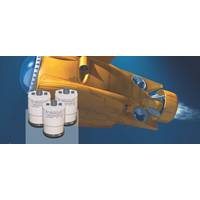
SoCal Tech Focus: Energy Sales
to 900 Watt-hours (Wh). In addition, by using alkaline cells, the new system requires no United Nations (UN) transportation testing or certification. “This pack designed by Energy Sales will reduce our costs for short term applications,” said Chris Siani, Sr. Electrical Engineer at APL/UW. “Load and pressure tests done at my lab show that this battery pack design operates well at pressures up to 4,400 psi (~3,000m), without the need for costly steel or titanium housings. We are looking forward to using this new battery pack in upcoming projects.” Specifications Prod
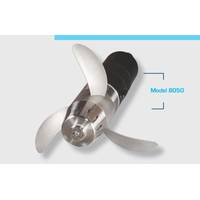
SoCal Tech Focus: Tecnadyne
on their vehicles. Tecnadyne products are presently being used on thousands of vehicles throughout the world, operated by many offshore oil service companies, universities and research institutions. Recent customers include Woods Hole Oceanographic Institute, Stanford University, University of Washington APL, Lockheed-Martin, Boeing, GE Nuclear, Oceaneering International, Mitsui Engineering & Shipbuilding, L-3 and Electric Boat. Tecnadyne has recently focused its attention on the growing AUV market and the need for higher efficiency thrusters. AUV specific thrusters share many characteristics with
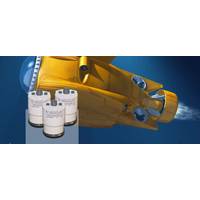
New Alkaline Battery System for the Oceanographic Market
, set to be unveiled at Oceanology International North America, February 14-16, in San Diego. Energy Sales, Inc. said its new design replaces the need for housings made of titanium or other costly advanced composite materials. Working with the University of Washington Applied Physics Lab (UW/APL), the company sought to develop a cost-efficient battery solution specific to the deep ocean – depths that range from 1,800 to 3,000 meters. “Collaborating with UW, we’ve been able to not only identify and design in better cost efficiency, but to demonstrate a remarkable



 February 2024
February 2024





